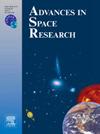利用基于 PCA 的新型模型堆叠方法绘制特大山洪易发图
IF 2.8
3区 地球科学
Q2 ASTRONOMY & ASTROPHYSICS
引用次数: 0
摘要
本研究介绍了一种高效的模型堆叠方法,将六种不同的机器学习和统计模型与主成分分析(PCA)结合在一起。该方法适用于伊朗卡尔赫盆地的山洪灾害易感性绘图。所选模型包括随机森林 (RF)、提升回归树 (BRT)、支持向量机 (SVM)、人工神经网络 (ANN)、广义相加模型 (GAM) 和最小绝对收缩和选择算子 (Lasso),其中 RF 也是堆叠的元模型。结果显示,各个模型的预测结果之间存在明显的相关性,这可能会影响元模型的功效。为了解决这个问题,我们对模型预测进行了 PCA 处理,以生成去相关成分作为元模型的输入,从而提高预测的准确性和稳健性。根据接收者操作特征曲线下面积(AUROC)进行的评估表明,GAM 的准确度最高,达到 0.924,优于所有其他单个模型。相比之下,RF 和 ANN 模型的准确度最低,均为 0.872。不过,不同模型之间的性能差距很小。值得注意的是,基于 PCA 的堆叠方法(0.936)超过了传统的模型堆叠方法(0.912)和所有单个模型的性能,这表明该方法可用于提高预测准确性。与传统的堆叠技术相比,这些研究结果认可了 PCA 堆叠方法。不过,还需要在不同应用领域开展进一步研究,以推广其功效。本文章由计算机程序翻译,如有差异,请以英文原文为准。
Extreme flash flood susceptibility mapping using a novel PCA-based model stacking approach
This study introduces an efficient methodology for model stacking, incorporating six diverse machine learning and statistical models alongside principal component analysis (PCA). The approach is applied for the flash flood susceptibility mapping within the Karkheh Basin in Iran. The selected models include random forest (RF), boosted regression trees (BRT), support vector machine (SVM), artificial neural networks (ANN), generalized additive model (GAM), and the least absolute shrinkage and selection operator (Lasso), with RF also serving as the meta-model for the stacking. The results revealed significant correlations among the predictions of the individual models, which could potentially impact the meta-model’s efficacy. To address this, PCA was applied to the model predictions to generate de-correlated components as inputs for the meta-model, thereby enhancing prediction accuracy and robustness. Evaluation based on the area under the receiver operating characteristic (AUROC) curve demonstrated that the GAM outperformed all other individual models with the highest accuracy score of 0.924. In contrast, the RF and ANN models had the lowest accuracy, both registering at 0.872. However, the performance disparity across models was minimal. Notably, the PCA-based stacking approach (0.936) surpassed both traditional model stacking (0.912) and the performances of all individual models, advocating for its use in enhancing predictive accuracy. These findings endorse the PCA-stacking method over conventional stacking techniques. Nonetheless, further research across varied applications is warranted to generalize its efficacy.
求助全文
通过发布文献求助,成功后即可免费获取论文全文。
去求助
来源期刊

Advances in Space Research
地学天文-地球科学综合
CiteScore
5.20
自引率
11.50%
发文量
800
审稿时长
5.8 months
期刊介绍:
The COSPAR publication Advances in Space Research (ASR) is an open journal covering all areas of space research including: space studies of the Earth''s surface, meteorology, climate, the Earth-Moon system, planets and small bodies of the solar system, upper atmospheres, ionospheres and magnetospheres of the Earth and planets including reference atmospheres, space plasmas in the solar system, astrophysics from space, materials sciences in space, fundamental physics in space, space debris, space weather, Earth observations of space phenomena, etc.
NB: Please note that manuscripts related to life sciences as related to space are no more accepted for submission to Advances in Space Research. Such manuscripts should now be submitted to the new COSPAR Journal Life Sciences in Space Research (LSSR).
All submissions are reviewed by two scientists in the field. COSPAR is an interdisciplinary scientific organization concerned with the progress of space research on an international scale. Operating under the rules of ICSU, COSPAR ignores political considerations and considers all questions solely from the scientific viewpoint.
 求助内容:
求助内容: 应助结果提醒方式:
应助结果提醒方式:


